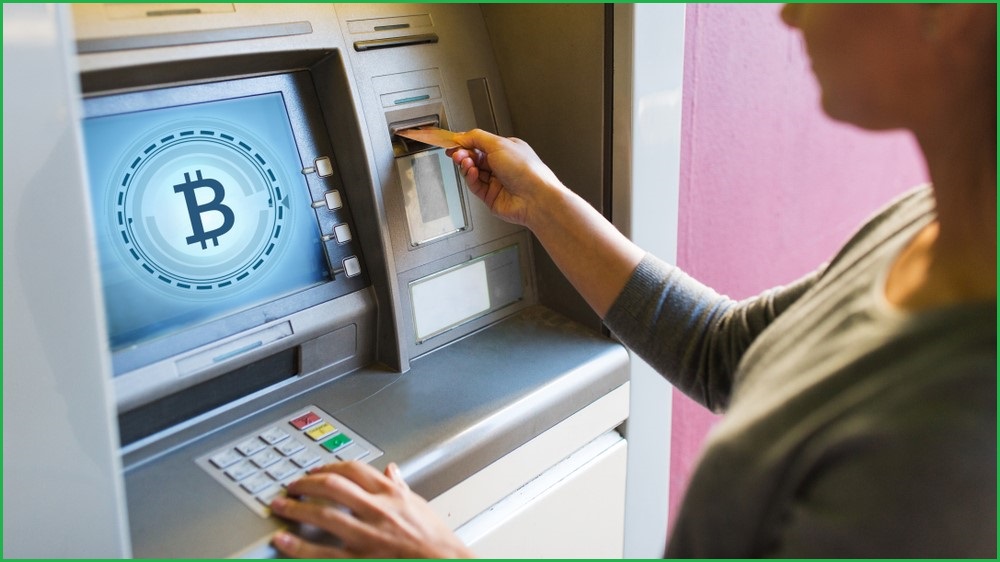Australian police have warned against a rise in scams relating to cryptocurrency ATMs after $3 million lost was to scammers last year.
‘Crypto ATMs’ are teller machines which enable users to buy cryptocurrency in exchange for cash.
Appearing in petrol stations, convenience stores and shopping centres, scammers have increasingly exploited the technology to extort and convert large sums of cash from their victims.
Across just 150 unique reports of scams involving crypto ATMs in 2024, the Australian Cyber Security Centre’s ReportCyber platform saw an estimated $3,107,600 in losses.
This equated to one report every two and a half days, the Australian Federal Police (AFP) said, with losses averaging higher than $20,000 per scam.
AFP commander Graeme Marshall said that despite approximately $275 million moving through crypto ATMs every year, victims may be under-reporting their losses.
“Intelligence on crypto ATMs suggests everyday Australians are losing significant funds to crypto ATM scams, significantly more than is currently being reported to authorities,” said Marshall.
“This could be because victims don’t realise they’ve been the victim of a crime, they don’t know how to report scam activity, or they feel embarrassed because they were scammed.”
Criminals generally use crypto ATMs as part of wider schemes, such as money mule rings or social engineering attacks, to bait victims into making irreversible transfers to a scammer’s digital wallet.
Investment scams accounted for 63 of last year’s reported incidents – ahead of 35 extortion emails and 24 romance scams – and 72 of the victims were aged over 51.
Financial crime watchdog AUSTRAC meanwhile found the number of crypto ATMs in Australia has grown from just 23 in 2019 to more than 1,800 in 2025.
“As their number has increased, so has the prevalence of these scams,” AFP said.
ATMs capped by watchdog
AUSTRAC projected about $275 million is being moved through crypto ATMs in Australia every year.
The majority of transactions are cash deposits for the purchase of cryptocurrencies such as Bitcoin, Tether and Ethereum.
“Intelligence suggests a large number of these transactions are scam related,” said the AFP.
After a three-month analysis of data from nine crypto ATM providers, AUSTRAC has initiated collaborations with law enforcement and placed a number of operating conditions on the crypto ATM industry.
Further to a $5,000 limit on cash deposits and withdrawals, operators will be expected to follow “enhanced customer due diligence obligations”, implement “mandatory scam warnings” and follow requirements for “more robust transaction monitoring.”

Limits have been imposed on how much can be deposited and withdrawn from crypto ATMs. Photo: Shutterstock
The new conditions come after one particularly egregious case saw a man reportedly transfer $1.4 million dollars to a scammer.
"I'm aware of a case involving an elderly gentleman caught up in a romance scam,” AFP assistant commissioner for cyber command Richard Chin told ABC News.
“He was convinced to part with $1.4 million.”
AUSTRAC chief executive Brendan Thomas meanwhile said people between 60 and 70 years of age were identified as “one of the most prolific users of crypto ATMs in Australia”.
“It is a huge concern that people in this demographic are overrepresented as customers using cash to purchase cryptocurrency and, as evidence suggests, that a large number of 60-70 year old users are victims of scam activity,” said Thomas.
AUSTRAC outright refused to renew the registration of one South Australian crypto ATM provider, Harro’s Empires, due to ongoing risks that its machines could be exploited.
Call for action as scam losses climb
Australians reported about $119 million in broader scam-related losses for the first four months of 2025, according to data from the National Anti-Scam Centre’s (NASC) Scamwatch platform.
Although scam reports dropped 24 per cent in volume for the same period last year, from 95,577 to 72,230, financial losses increased 28 per cent.
Following these results, NASC called for Australian businesses to “join the fight against increasingly sophisticated scams” by upping their data-sharing practices.
Data-sharing has been an ongoing focus for the centre, which over the last two years has built a dedicated “data-sharing system” that enables it to distribute data from scam reports in “near real-time”.
Organisations receiving this data can then “accelerate action” against a given scam by, for example, freezing suspicious accounts, blocking phone calls or taking down malicious websites.
“Our approach to scam prevention is grounded in partnership,” ACCC deputy chair Catriona Lowe said Monday.
“Organisations such as banks, digital platforms, and telecommunication companies, can help disrupt scams faster and reduce the harm they cause.”
Recently, NASC partnered with crypto exchanges Swfytx and Crypto.com to take action against 836 scammer cryptocurrency wallets, while social media giant Meta worked with the centre to remove approximately 29,000 accounts that were sharing job scam content in Australian Facebook groups.
“The work of our fusion cells has demonstrated a piece of data that may be unremarkable on its own, when joined with other pieces of data, can form powerful intelligence,” Lowe said.










